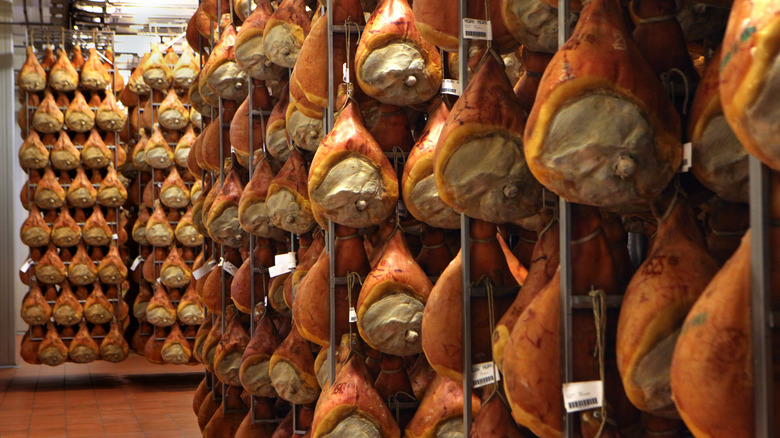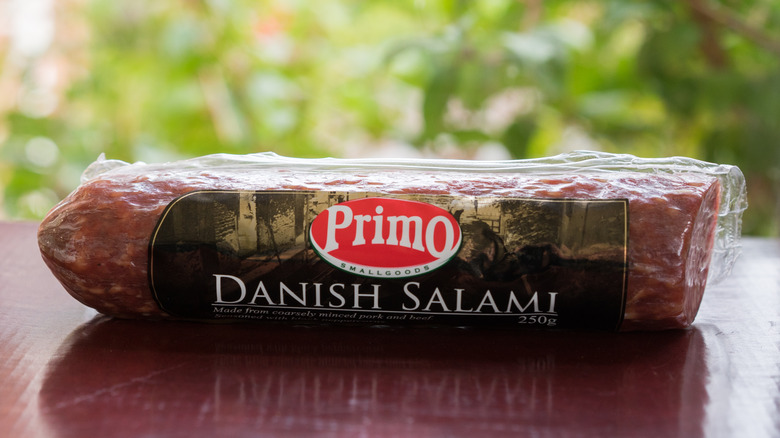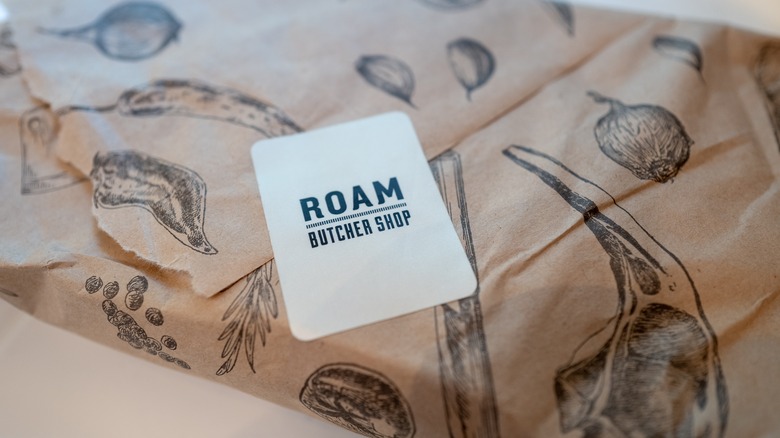Where To Store Shelf-Stable Cured Meats For The Best Results
Cured meats are one of the small wonders of the culinary world — beautiful slabs of meat, famously one of the ways to prevent animal products from poisoning you, that can be consumed weeks and months after the beast is slaughtered and prepared for consumption. Meats like pork, in particular, are often salt-cured since salt evaporates moisture from the meat, protecting it from bacteria. Preservatives like sodium nitrate are also commonly injected in order to fast-track the drying and preserving process, ensuring that your charcuterie board will taste good and, well, not kill you.
But because cured meats are preserved using salt and other chemicals, you might be confused about how to properly store them. At the grocery store or butcher, you might find them in the fridge, on a deli board, or stored in a rustic wicker basket, adding to the confusion.
And while cured meats can technically be labeled as shelf-stable products, they really belong in your fridge to ensure they stay safe to eat. Cured meat is still meat, after all.
Keep them cold to stay fresh
In particular, cured meats should be stored in the coldest part of your fridge — well in the back — at a temperature of 40 degrees Fahrenheit or below. Exposure to light and oxygen can cause your cured meats to grow bacteria after they have been opened, so it's better to be safe than sorry!
Similarly, it is recommended to consume your charcuterie meats within a week once the package has been opened — though they can last for far longer if properly sealed. This is partially due to the acidic coating that forms on smoked cured meats, which protects them from bacteria. Once cut into, this coating is broken, and the meat is once again exposed to the elements. Cold-smoked meats, by comparison, can be stored for a very long time. You just need to ensure that they stay cold inside that fridge. Of course, keeping cured meats loosely stored in half-opened plastic packaging will result in them drying out quickly, or taking on flavors of other ingredients in your refrigerator, and they could even develop a particular chewy refrigerator funk.
Store your meat in butcher paper
To keep your goods fresh, one of the best storage vessels for cured meats is a gift wrapping of butcher paper. Since many dried sausages and cuts of everything from coppa to jamón ibérico are sold wrapped in butcher paper, this makes things easier for you. Try not to rip the paper when you first open your charcuterie — and carefully secure it every time you return it to the fridge with twisty ties, rubber bands, or even chip clips. If you really want to be extra, you can vacuum seal your meats, and some cured meats, like chorizo, can even be stored in a tea towel to absorb moisture.
If your cured meat comes in plastic packaging, pick up a roll of butcher paper at your local grocery store. You might be tempted to reach for your trusty roll of parchment paper, but while these two products look similar, they are a bit different. Parchment paper is designed for cooking with a food-safe coating of silicone while butcher paper is more versatile, and it can be used for storage. However, in a pinch, your parchment paper is still a better alternative than plastic packaging.



